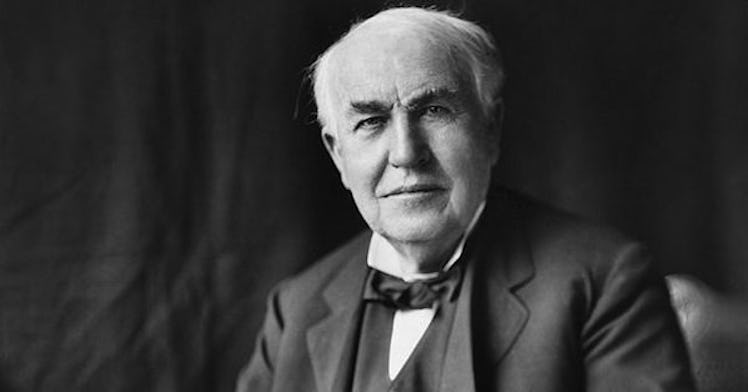
Thomas Edison Has A Scientific Formula To Success That You Need To Follow
Thomas Edison tried more than 2,000 different filaments before he was able to create a market-viable light bulb.
Some filaments burnt out and others were too expensive to source. Still, others were too labor intensive.
Edison and his team invested countless hours exploring these dead ends.
Each filament took days or even weeks of work before they could be discounted as possibilities. Some showed early signs of success, burning bright and seeming to last , only to be eventually proven as an eventual non-viable option.
Stories say Edison would become nearly giddy with each failed attempt. He loved failure. He’s credited with saying:
“Negative results are just what I want. They’re just as valuable to me as positive results. I can never find the thing that does the job best until I find the ones that don’t.”
It’s hard for many of us to imagine enjoying investing so much time and energy in exploring a possibility only to come to a dead end; yet that’s the reality of the creative process for Edison.
He wasn’t succeeding unless he was failing.
To put it in Edison’s words: “I have not failed. I’ve just found 10,000 ways that won’t work.”
The Scientific View Of Failure
Edison was a true scientist. His experiments were meant to teach him something. Failure wasn’t an emotional event for him as it is for others; it was a piece of data that he used to inform his process.
When a scientist conducts an experiment, all results inform him or her. There isn’t an emotional response attached to one or the other. Both failure and success are equally possible and welcome outcomes. They both teach and move the scientist forward in his or her work.
Unlike scientists, many of us are afraid of trying and failing. Failure for us has negative feelings attached to it.
We tell painful stories of failures ; we’ve failed tests, missed the big shot in sports, failed relationally, let others and ourselves down and so on. Because we have known failure as a painful event in the past, we avoid it in the present and future.
Scientists have a different perspective.
A failed test does not mean a scientist is not good at his or her job; it means he or she is doing his or her job.
What if you could become more of a scientist and embrace failure as a step on the road to where you want to go?
Failure Doesn’t Mean You’re Bad At Life; It Means You're Truly Alive
To put it another way, the simplified scientific method goes like this:
1. Ask a question,
2. State a hypothesis,
3. Conduct and experiment,
4. Analyze the results,
5. Make a conclusion.
The conclusion then leads the scientist to back to step one, with a modified question in mind.
Our non-scientific process often looks like this:
1. Ask a question,
2. State the hypothesis,
3. Conduct and experiment,
4. Allow the results determine how you feel about life, work, yourself.
Edison’s Approach To Finding Success
In the end, pursuing your life’s work or a dream project is a lot like Edison’s process in inventing the light bulb. It is not about easy wins and quick success; it’s about trying like Edison did.
It's about failing, learning from the results of your actions and persevering until things start to click. It takes time, and you’ll find many options that don’t work before you find the one that does.
You’ll get stuck and be unsure of how to proceed (I’ve been there countless times!) But, you, too, will find a way forward. Again, to quote Edison, “When you have exhausted all possibilities, remember this: you haven’t.”
You can’t expect to find success overnight. You have to start somewhere and keep experimenting. You have to be willing to work hard, face your fear of failure and learn to fail often.
I’d like to invite you to become a scientist with your life. You’re experimenting. You’re testing possibilities. It’s not about failure or overcoming your fear of failure. It’s about finding ways that work and others that don’t.
Invest yourself in the process, not in the outcome of a particular part of the process.
"Our greatest weakness lies in giving up. The most certain way to succeed is always to try just one more time." ― Thomas A. Edison
You don’t make headway by succeeding; you make headway by trying.
Success comes with experimentation over time.
This article was published on themeaningmovement.com. Republished with permission.